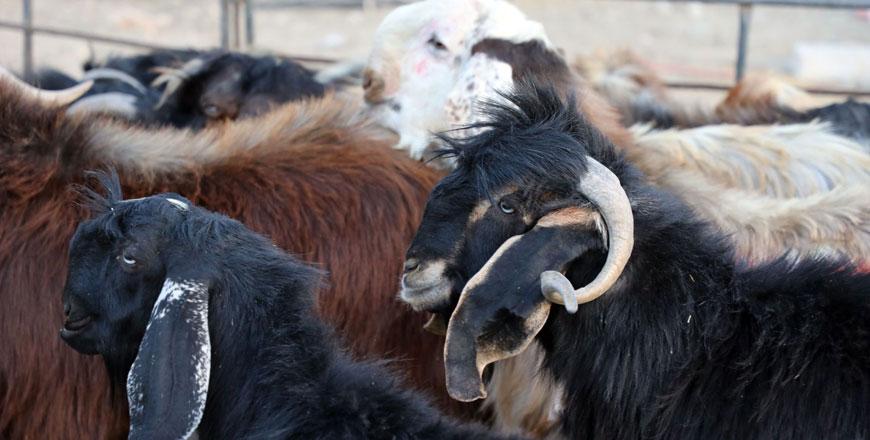You are here
Livestock prices possibly affected by Sudan conflict ahead of Eid Al Adha
By Rayya Al Muheisen - May 10,2023 - Last updated at May 10,2023
AMMAN — Livestock owners and breeders are growing concerned over potential ramifications that the ongoing conflict in Sudan may have on the prices of sacrificial animals in Jordan as Eid Al Adha approaches, said Za’al Kawaleet, president of Livestock Owners and Breeders Association
Eid Al Adha means the “feast of sacrifice”, and during the holiday, Muslims slaughter livestock, cattle or camels and distribute the meat to families in need.
Prices of livestock have increased “slightly” due to the suspension of imports from Sudan, Kawaleet told The Jordan Times.
Jordanian livestock importers don’t import “large quantities” of Sudanese livestock. However, due to the global suspension of exports from Sudan, prices of livestock are projected to increase globally, Kawaleet noted.
Sudan is a key global exporter of livestock, especially sheep, Kawaleet added.
“With imports suspended from Sudan before Eid Al Adha, Gulf Cooperation Countries are shifting their livestock imports to other markets such as Romania, Spain, Georgia, Australia and Turkey to compensate for the shortage,” Kawaleet said.
Now that Eid Al Adha is around the corner, the demand for livestock is on the rise, leading to a possible surge in prices, he added.
Kawaleet emphasised the importance of ensuring price stability and considering citizens’ purchasing power, as the Ministry of Agriculture allows imports from about 18 countries under specific conditions.
Some varieties of imported meat are already witnessing a relative price increase in the local market, Kawaleet added.
Related Articles
AMMAN — Livestock sales witnessed a 50 per cent drop during this year’s Eid Al Adha compared with last year, which is the most favourable se
AMMAN — Prime Minister Bisher Khasawneh on Monday issued a circular announcing a public holiday extending from Tuesday, June 27, through Sat
AMMAN — Representatives from a variety of economic sectors have noted that demand in their respective industries is either stagnant or “shy”












